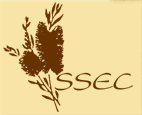 • Seaweed Harvest
• Seaweed Harvest
• Oysters & Shells
• Shellgrit & Worms
• Oyster Industry
• Fishing
• Fishfarm
• Domestic Animals
• Dairies
|
Early Enterprises |
Shellgritters and Worms for Bait
Shellgrit gathering for the pet-bird and poultry industries began at the turn of the century. It had its heyday during the 1940s but was finished by 1956 when poultry farmers discovered that they could buy crushed oyster shells from the commercial oyster growers considerably cheaper than the old mud oyster shells dredged from the seabed of Botany Bay.
The crushed mud oyster shells were being sold at that time to the farmers for about 30 pence a 35lb sugar bag. The filled bags were taken to what is today the Water Police Wharf at Sans Souci and to Woolooware Bay where Lewis Anchorage is today. Apart from the local market, the grit was trucked to Parramatta and Gosford, with 150-250 bags to a truck depending on the size of the truck. There were many gritters involved in this lucrative business. Unfortunately three decades of intense dredging and raking of the seabed of Botany Bay irreversibly damaged large areas of the seagrass beds. Seagrasses and mangroves are maturing grounds for flathead, bream and other fish which lay their eggs at the headlands and rely on tides and currents to drift the spawn into the seagrass beds where the fish hatch and mature, relatively safe from predators. River garfish, which lay their eggs directly on the blades of the seagrass, are now gone from the Georges River because there is so little seagrass remaining for them. Boat Harbour Shellgrit
The beach at Boat Harbour, covered in densely packed small seashells, was an ideal shell-gathering region. 'Shellgrit' Charlie, one of the gatherers before World War II, shoveled crushed shell over his 'sieve', the wire mesh base of an old bed, then packed the graded grit into sugar bags before loading it onto his rubber-wheeled dray. Charlie also bought shellgrit from local lads who dug and bagged it for threepence a sugar bag. His laden dray was driven along the beach then to Cronulla railway station.
Worms For Bait
Industrious oyster farmers and fishermen supplemented their income by supplying worms for bait to fishing-tackle shops. The worms were dug mainly in Quibray Bay, put into cardboard punnets lined with strands of seagrass, and sent all over the state.
One wormer in the 1950s was digging worms at the end of Kurnell's Bonna Beach when a new inspector came along and insisted on confiscating his shovel and worms. The wormer picked up his shovel, held it with both hands and said, "You'll have to fight me for it!" The inspector replied, "Well, I'm taking your worms." The wormer retorted, "Well, I'll give you the worms, where do you want 'em? In the car? Front seat or back seat?" "In the back," said the inspector. The wormer promptly opened the car door and tipped in the lotwater, sand, wormsall over the back seat! He commented later, "I haven't been digging worms down there for a long while now!" |
| top of page |
|
| |
|



